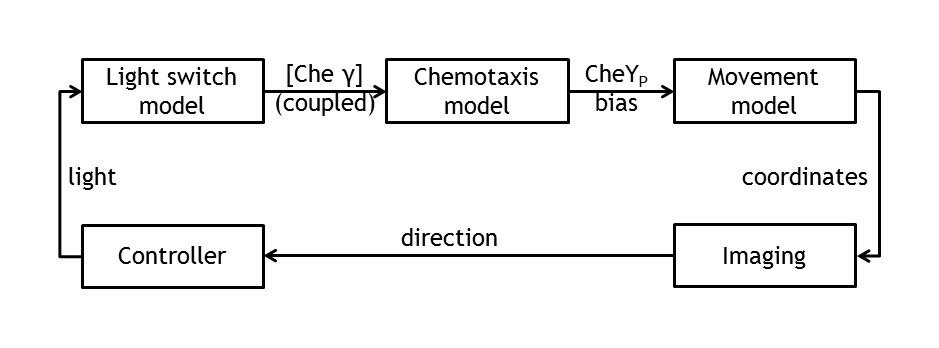Team:ETHZ Basel/Modeling
From 2010.igem.org
Molecular Modeling Overview
In order to support wet laboratory experiments and to create a test bench for the information processing part, a molecular model of E. lemming was created. This goal was achieved by implementing and combining deterministic molecular models of the individual parts.
Implementation of molecular models
The core component of E. lemming is the fusion of one light-sensitive protein (LSP?) to a protein of the chemotaxis pathway (Che?). Upon change of wavelength of light pulses, this component will dimerize with the corresponding light-sensitive protein (LSP?'), which is linked to an anchor protein, bound to an anchor (plasmid). The result is a change of the spatial localization of Che? and perturbation of the chemotaxis pathway, which ultimately leads to a different tumbling/directed flagellar movement state ratio.
Individual molecular models
In a first step, we implemented individual deterministic molecular models of subdevices.
- Light switch: based upon the light-sensitive dimerizing Arabidopsis proteins PhyB and PIF3.
- Chemotaxis: two similar models of the chemotaxis receptor pathway.
- Movement: a statistical model of E. coli movement, determined by distribution of input bias.
Combined molecular models
The next step, combination of the individual molecular models to a comprehensive model of E. lemming was achieved in two substeps:
- Light switch - Chemotaxis: used to provide support for wet laboratory.
- Light switch - Chemotaxis - Movement: complete molecular model.
 "
"




